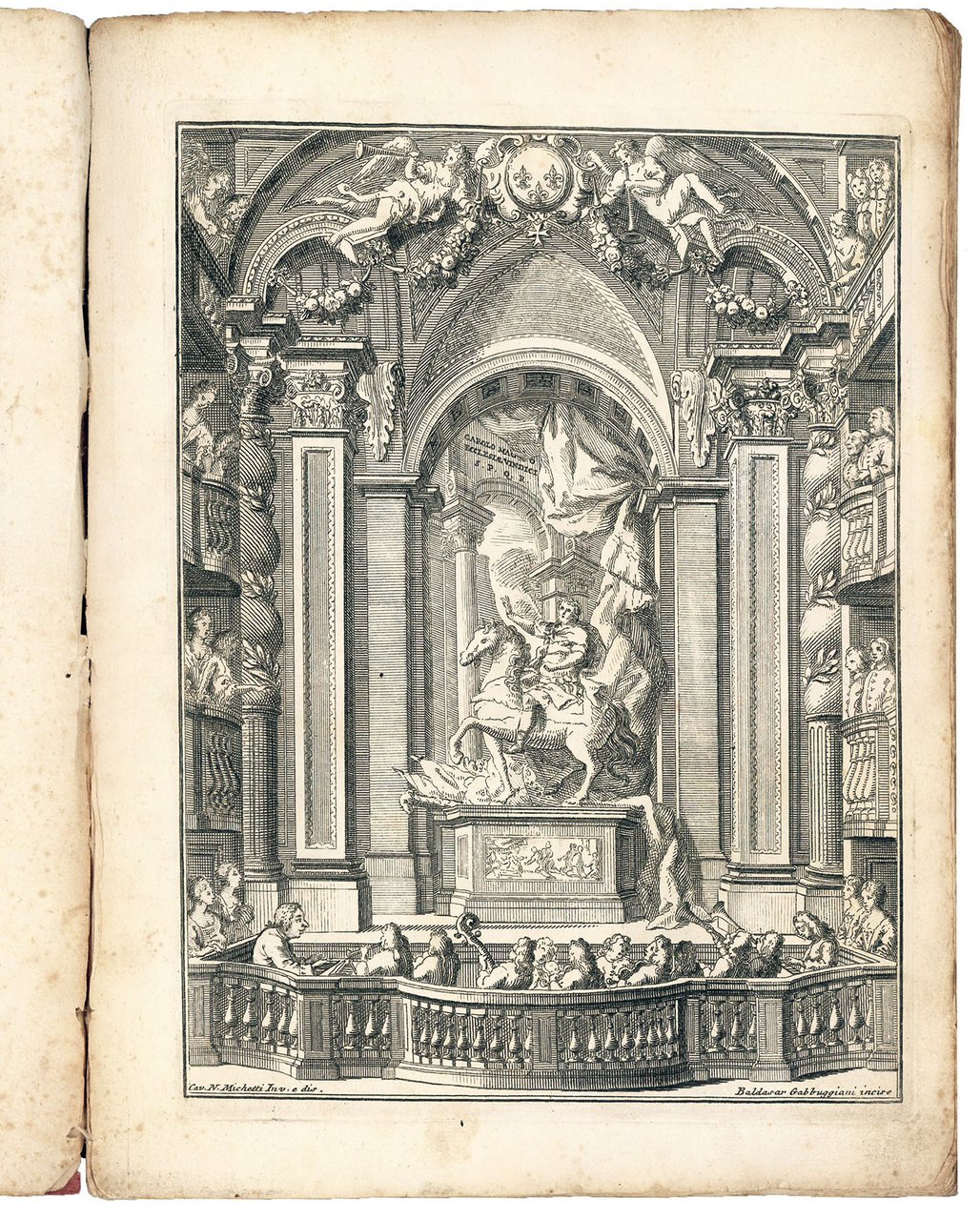
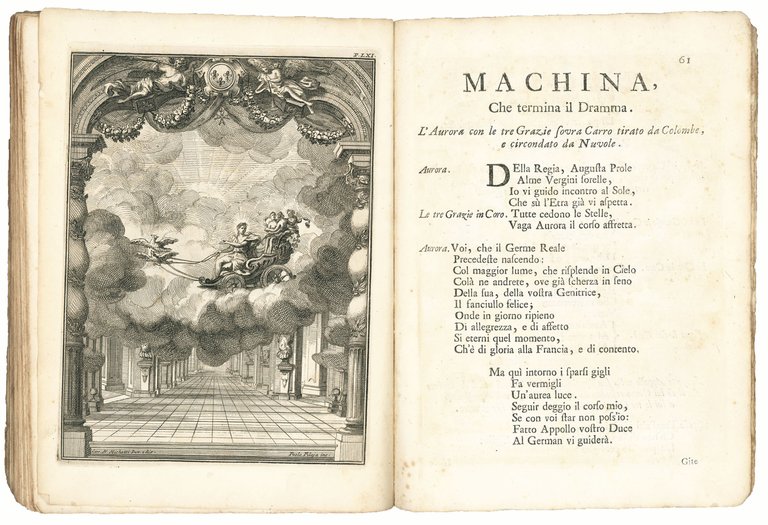
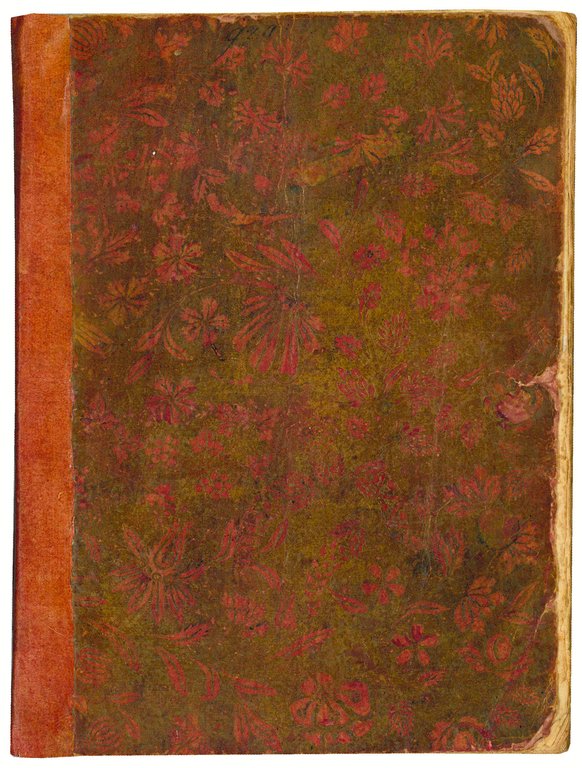
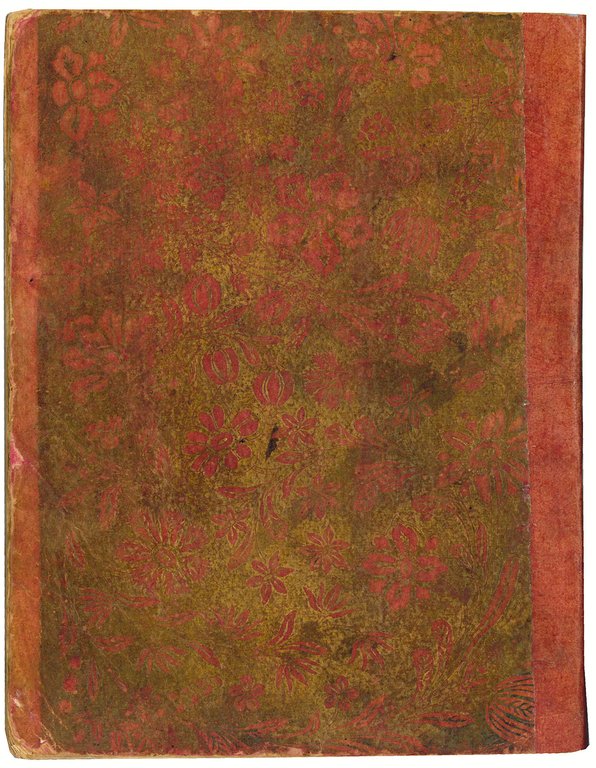
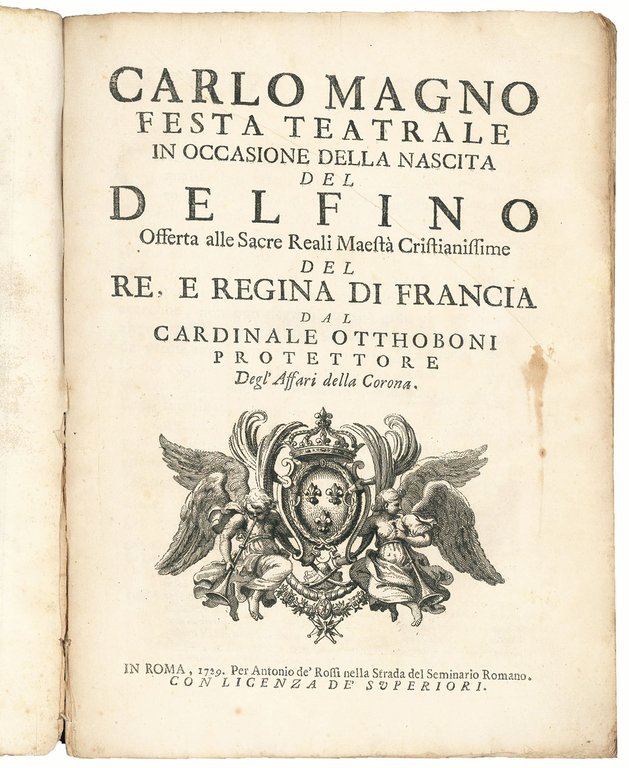
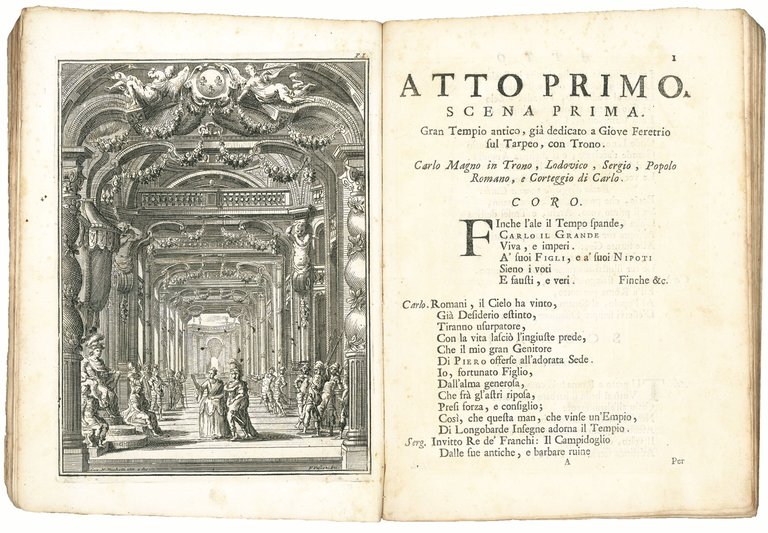

Rare and modern books
OTTOBONI, Pietro (1667-1740)
Carlo Magno, festa teatrale in occasione della nascita del Delfino offerta alle sacre Reali Maestà Cristianissime del Re e Regina di Francia dal cardinale Otthoboni protettore degl'affari della corona
Antonio de'' Rossi nella strada del Seminario Romano, 1729
5800.00 €
Govi Libreria Antiquaria
(Modena, Italy)
The correct shipping costs are calculated once the shipping address is entered during order creation. One or more delivery methods are available at the Seller's own discretion: Standard, Express, Economy, In-store pick-up.
Bookshop shipping conditions:
For items priced over €300, it is possible to request an instalment plan from Maremagnum. Payment can be made with Carta del Docente, Carta della cultura giovani e del merito, Public Administration.
Delivery time is estimated according to the shipping time of the bookshop and the courier. In case of customs detention, delivery delays may occur. Any customs duties are charged to the recipient.
For more infoPayment methods
- PayPal
- Credit card
- Bank transfer
-
-
Find out how to use
your Carta del Docente -
Find out how to use
your Carta della cultura giovani e del merito
Details
Description
First edition of this rare and important opera libretto celebrating Charlemagne's victories in Italy. It was written by Pietro Ottoboni, nephew of Pope Alexander VIII, to celebrate the birth of the Dauphin, son of King Louis XV and Maria Leszczyska. When the Dauphin was born at Versailles on 4 September 1729, a courier left for Rome carrying the news followed two days later by a letter from the king to the pope. The Cardinal de Polignac, the pope's minister, was ordered to organise the celebrations. He performed a cantata in the courtyard of the Palais Altemps and organised two horse races and a large firework in the Piazza Navona. In such a festive context, Cardinal Pietro Ottoboni, protector of the Church of France, wrote a play in three acts with two dance interludes by Gioseppe Fonton, which was performed by Giacomo Orti and set to music by Giovanni Battista Costanzi. The Carlo Magno, festa teatrale in occasione della nascita del Delfino offerta alle sacre Reali Maestà Cristianissime del Re e Regina di Francia dal cardinale Otthoboni protettore degl'affari della corona was first staged in the Theatre of the Palazzo Ottoboni in October 1729.
Three different editions of the libretto were actually printed in the same year. A 12mo unillustrated edition with a print run of 3,000 copies; a folio edition (the present) on high-quality writing paper (‘carta da scrivere') in a larger print run of 3,000 copies; and finally, a luxury edition of only 100 copies on high-quality ‘carta reale' in folio format. The second and third editions feature fifteen engravings. The sumptuous edition is also decorated with an ornamental frame surrounding the frontispiece, the engravings and all the text pages.
The libretto is illustrated with 14 engravings, eleven of which show the scenes and two the final Macchina. The play has ten different scene changes, each of which is captured by an engraving. Only in the second act there are two plates, one showing the arrival of Louis in Adelinde's camp and the other the battle that led to the defeat of the Samnites. This explains why there are eleven plates in total. The two plates in the Macchina show the chariot driven by Aurora, accompanied by the three Graces, and the Palace of the Sun, with Apollo on the steps and the Graces approaching him, singing for the glory and happiness of France. The frontispiece is also significant because it shows the theatre designed by Juvarra in the Palace of the Chancellery and the proscenium of the theatre with the eleven members of the orchestra of the time, composed of two cembalists and ten other players at the bottom, one of the first illustrations of an orchestra. The harpsichordist seated on the left is believed to be Costanzi himself directing the orchestra. All the illustrations are framed by a fictitious architectural arch with the king's coat of arms at the top.
“On 24 November 1729, Cardinal Pietro Ottoboni (1667-1740) invited the Roman and European ruling elite to an opulent opera performance in his private theatre in the Palazzo della Cancelleria. The work p

